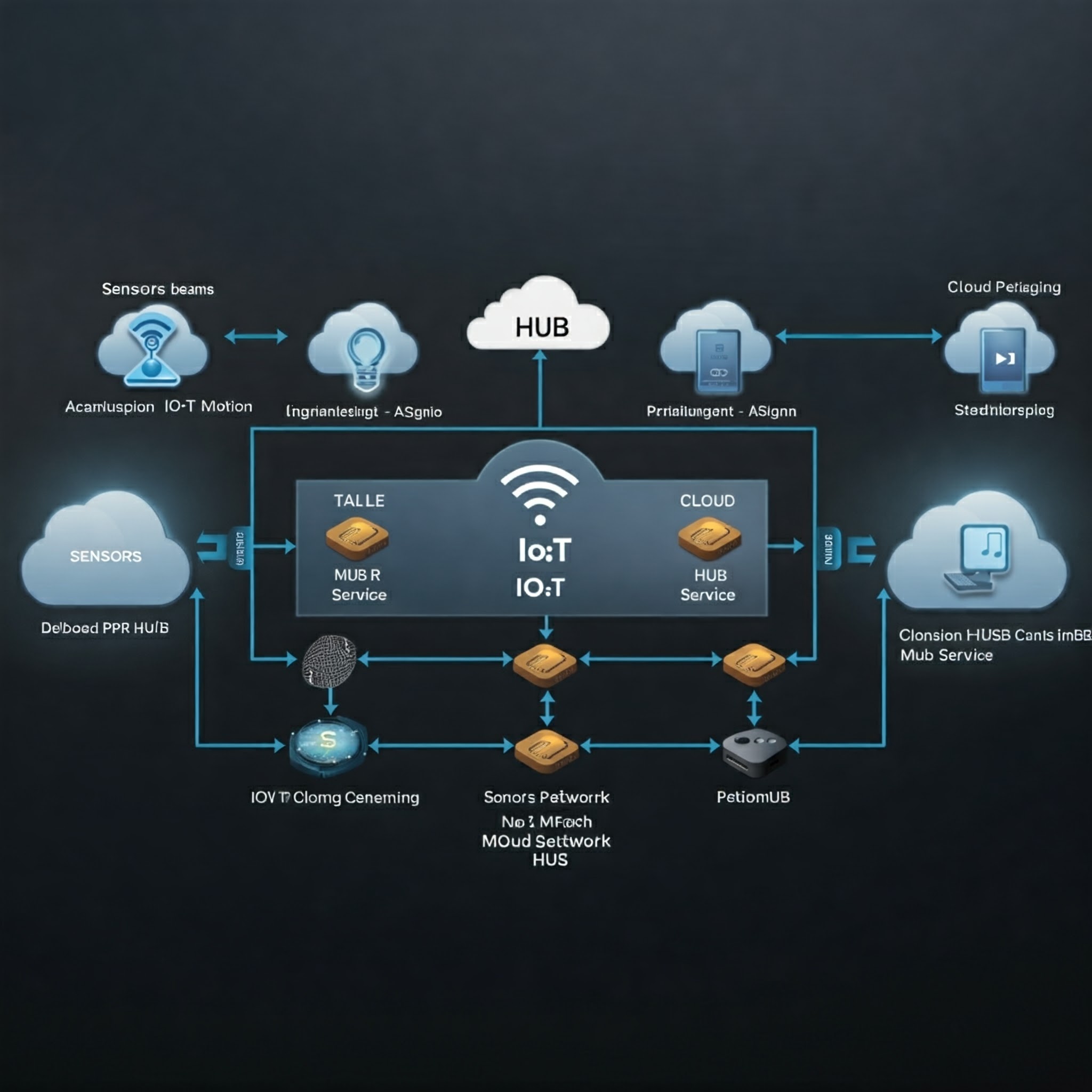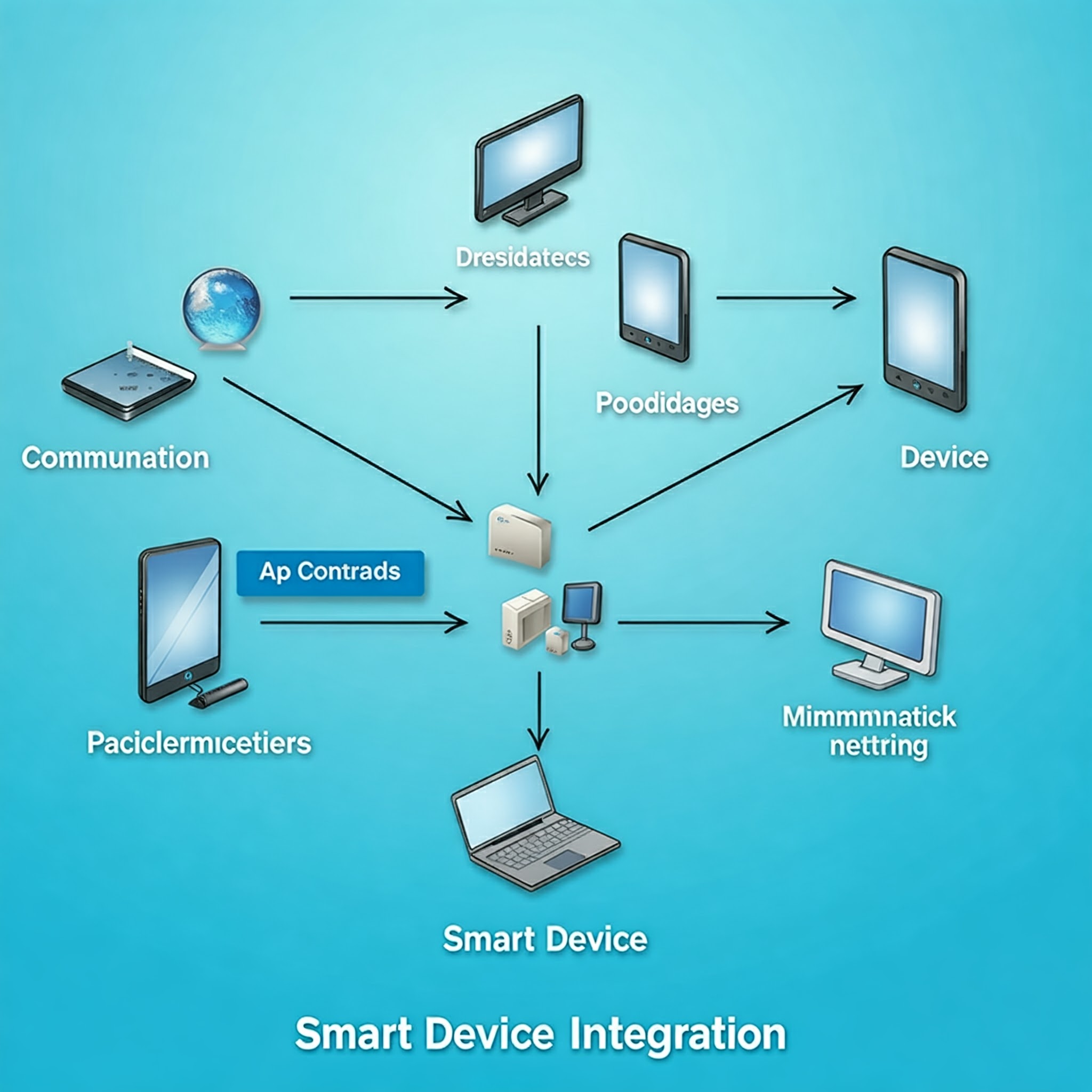The Internet of Things (IoT)
The Internet of Things (IoT) is a combination of various technologies. The basic required terms are a heterogeneous network for communication of objects, required hardware of each object, processing/computing power of each object, and security of each element in the IoT.
To accommodate the diversity of the IoT, there is a heterogeneous mix of communication technologies, which need to be adapted to address the needs of IoT applications such as energy efficiency, security, and reliability. Several manageable communication technologies that address the need for IoT include wired and wireless technologies like Ethernet, Wi-Fi, Bluetooth, Zigbee, and Z-Wave.
Intelligent transportation, industry automation, logistics, medical diagnosis, and the service sector are areas where the coupling of information and things can create new business processes or enhance existing practices at better levels.
Characteristics of IoT
Dynamic and Self-Adapting
IoT devices and systems may have the capability to dynamically adapt to changing contexts and take actions based on their operating user’s context or sensed environment.
Self-Configuring
IoT devices may be self-configuring, allowing a large number of devices to work together to provide certain functionalities like networking and fetching the latest software upgrades.
Interoperable Communication Protocols
IoT devices may support many interoperable communication protocols and can communicate with other devices and also with the infrastructure.
Unique Identity
Each IoT device has a unique identity and a unique identifier (such as an IP address or a URI).
Integrated into Information Network
IoT devices are usually integrated into the information network, which allows them to communicate and exchange data with other devices and systems.

Emerging Trends in IoT
The Internet of Things, where everything gets connected, has become a reality! This ubiquitous penetration of technology has made lives easier, businesses smoother, and people have been able to communicate better and faster. People are realizing that they are standing during a paradigm shift where they can connect everyday things with technology.
This has opened up enormous potential in the world of information, where, with a proliferation of connected devices, you can enjoy several benefits. The Internet of Things (IoT) has promised several good things in the coming years. Here’s a look at some of the emerging trends.
Wearables that are not Confined to the Wrist Alone
We have seen the smartest wristwatches and wristbands, but now wearables are available in headgear, body wear, and footwear as well. In the coming years, we can imagine how smart headgear is going to become smarter. The same has been happening with body gear and footwear as well.
For example, athletes can track their performance using smart body gear, and footwear that would allow users to reach their workplace in half the time is becoming popular.
Vehicles that have Become Smarter
There is a shifting driver behavior to the connected vehicles that have been released in the past year. Technology has been really fast, and inventions are taking place in an accelerated manner. Self-driving cars are the next innovation in the automobile industry. It aims to control traffic jams, avoid crashes and accidents, and generally make the commute easier.
Smart Grid Systems
With the introduction of Smart Grids, the seamless connection of homes and businesses became possible. This was one of the biggest transformations that happened with IoT. As most of the newest products in IoT are intended for the consumer industry, smart grids are built to provide sustainable solutions for all your energy needs. The idea is to provide the highest quality energy at low costs, and with smart grids, this dream has been turned into a reality.
IoT is Reinventing the Retail Industry
The Internet of Things has started revolutionizing the retail industry as well. More than trillions of devices are being deployed to market products and goods. When new innovations in technology come up, there will be something in it for the consumers, because they are constantly demanding something new to make purchases easier. IoT will make a tremendous impact on the retail industry.

Economic Significance
Pervasive connectivity between people and processes will enable multiple services to be delivered automatically and contextually, whenever and wherever required, ushering in a Connected Life. Supported by cross-industry collaboration, the connected life will have a positive impact on many sectors of the economy, such as automotive, shipping and logistics, healthcare, and utilities, potentially benefitting billions of people globally. As the Connected Life will have a fundamental impact on the way we live and work, there will also be major social and environmental benefits, such as improved healthcare, safer and more efficient transportation and logistics, better education, and more efficient use of energy. The ability to capture real-time usage information and provide remote control, embedded mobile connectivity can make a wide range of devices, machines, and vehicles more efficient and effective, dramatically reducing waste and improving time productivity.
Such services will also contribute to economic growth by creating new business opportunities for mobile operators, equipment vendors, and other players in the mobile ecosystem as well as in adjacent industries.
They will represent a very important demand-side stimulus that helps finance the deployment of upgraded mobile networks able to provide IoT and broadband connectivity around the world.
The connected devices market will open up new revenue streams, facilitate new business models, drive efficiencies, and improve the way existing services across many different sectors are delivered.
The global business impact of the connected life can be split into two broad categories: ‘new revenue opportunities’ and ‘cost reduction and service improvements.’ In the future, it could be addressed by mobile operators and the remainder by the broader connected life ecosystem. Cost reductions and service improvements relate to less direct, but tangible benefits to organizations, governments, and consumers through the evolution of the connected life.
Technical Building Blocks
- IoT Basic Building Blocks
- IoT Working
- IoT Architecture Layers

